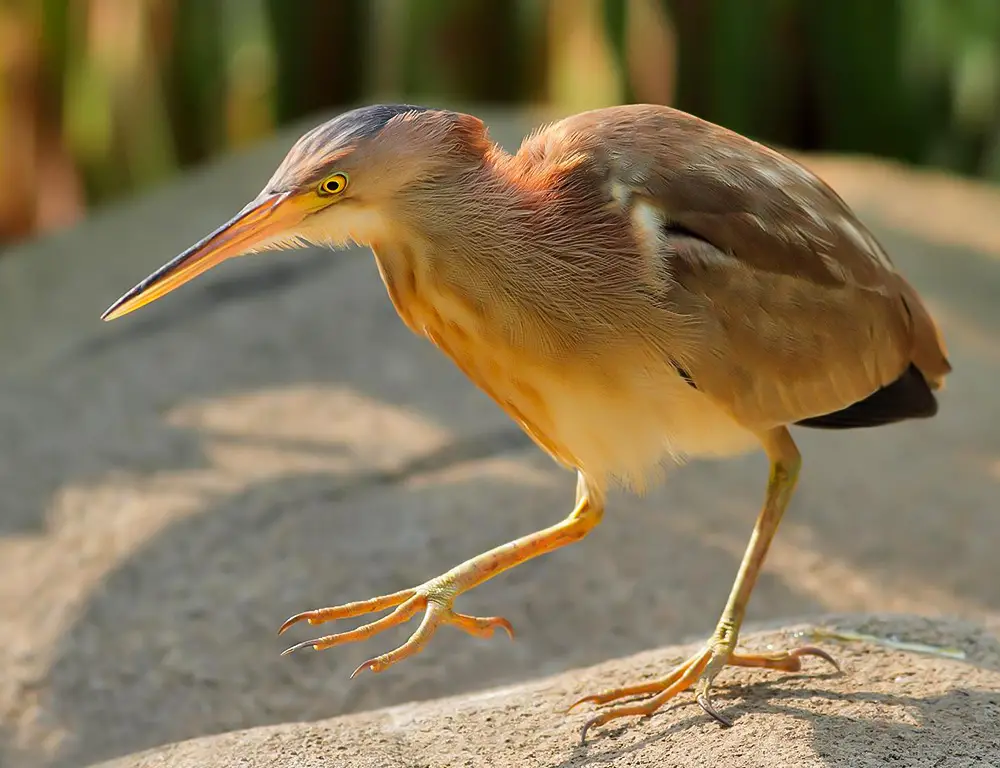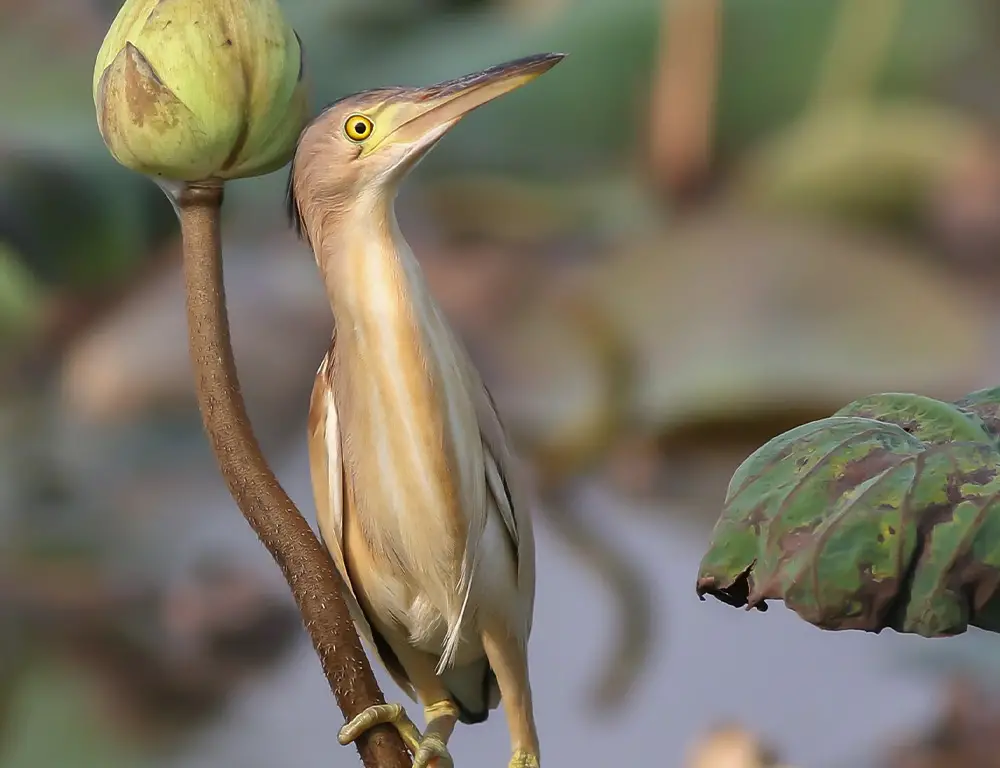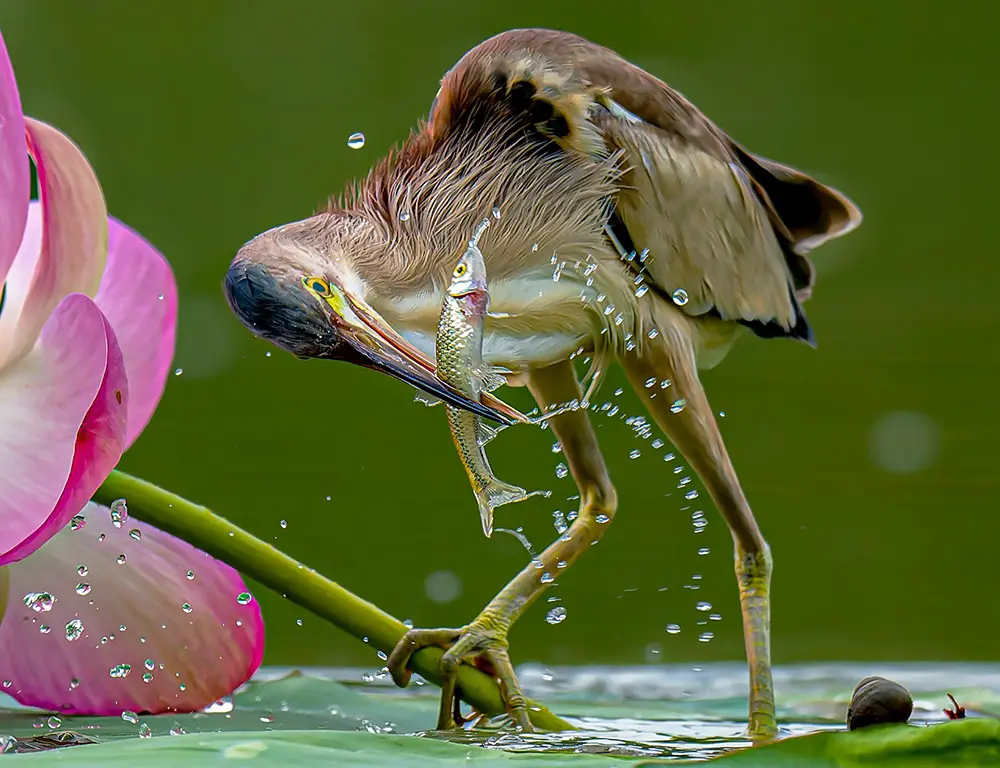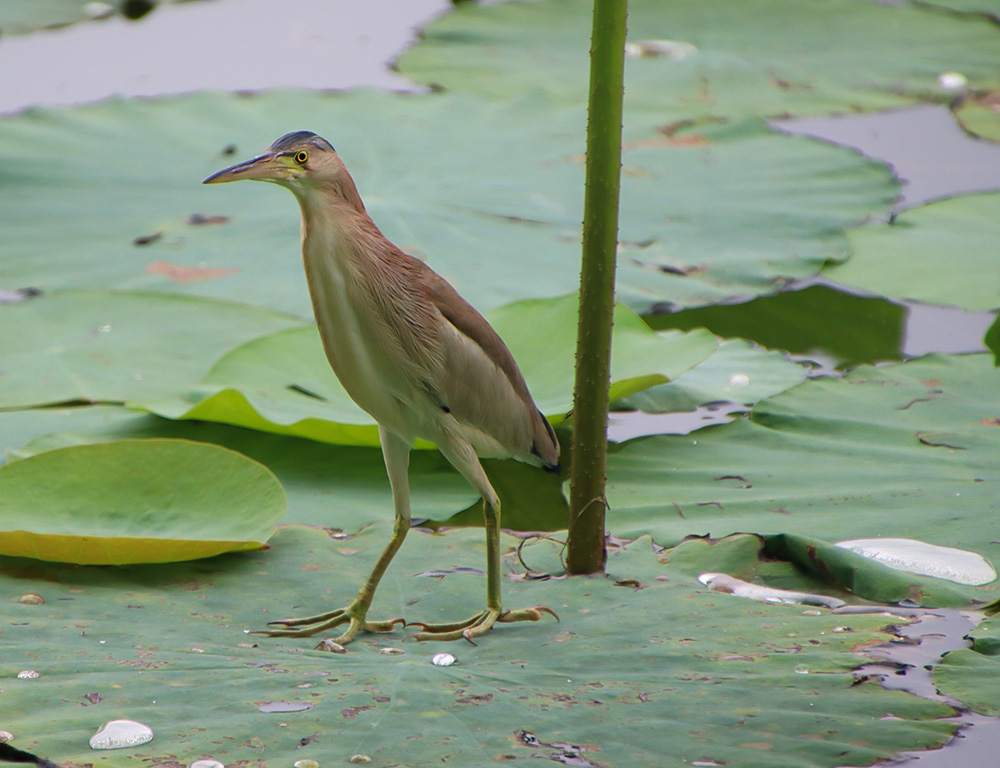Nestled within the reeds and marshes, the Yellow Bittern is a fascinating bird species often overlooked. It’s a small yet striking waterbird with an exciting life story.
Native to many parts of Asia, this bird has adapted well to its wetland environments, exhibiting behaviors and characteristics tailored for survival in these habitats.
Unassuming yet captivating, the Yellow Bittern boasts a distinctive yellow-brown plumage that aids in camouflage among the tall grasses it calls home.
Adept at fishing, they’re frequently seen patiently waiting before stealthily catching their aquatic prey.
Despite its widespread distribution across East Asia, Southeast Asia, and Indian Subcontinent, there’s still much researchers are striving to learn about this elusive bird. Its secretive nature and dwindling wetland habitats pose challenges to conservation efforts.
Nonetheless, every bit of new knowledge brings us closer to understanding and preserving this remarkable species.

Physical Characteristics of the Yellow Bittern: A Closer Look at Its Unique Features
The Yellow Bittern (Ixobrychus sinensis) possesses several notable physical characteristics that contribute to its appearance and adaptation to its wetland habitat:
Size
Yellow Bitterns are relatively small birds, with adult males typically measuring 36-38 cm long, while females can reach up to 40 cm. They belong to the smaller end of the avian size spectrum.
Wingspan
Despite their small size, Yellow Bitterns have an impressive wingspan ranging from 46-55 cm when fully extended. This significant wingspan aids in efficient flight, hunting, and rapid escape from predators.
Plumage
The plumage of Yellow Bitterns is predominantly yellowish-brown, which provides excellent camouflage among the reeds and marshes where they reside.
The upper parts of their bodies are covered in rich brown with yellow hues, while the underparts exhibit a lighter shade, often appearing whitish-yellow or cream-colored. Dark brown streaks run longitudinally down their necks towards the belly area.
Additionally, they have short olive-brown tails, a black stripe extending from the bill through the eye, and a greenish-yellow bill.
Camouflage
Yellow Bitterns are masters of camouflage, blending their plumage seamlessly into their surroundings, making them difficult to spot by predators and observers alike.
Habitat and Distribution of the Yellow Bittern: Insights Into Asia’s Wetland Ecosystems

The Yellow Bittern (Ixobrychus sinensis) is primarily found in wetland habitats across various Asian regions. Here’s an overview of its habitat and distribution:
Habitat
The Yellow Bittern (Ixobrychus sinensis) is primarily found in wetland habitats, where it thrives amidst lush vegetation and still waters. These birds remarkably prefer wetland areas with dense vegetation, such as marshes, swamps, and reed beds.
They are often nestled amidst the reeds, utilizing their cryptic plumage for camouflage. Yellow Bitterns are home in freshwater and brackish wetlands, including ponds, canals, and river edges.
They avoid open water bodies lacking sufficient cover, preferring habitats with abundant plant life that provide food and shelter.
Distribution
The Yellow Bittern is widely distributed across various regions in Asia, where it is found in countries such as India, China, Japan, Indonesia, the Philippines, and several Southeast Asian nations.
Within its range, Yellow Bitterns exhibit variations in abundance and seasonal movements. For example, they are widespread and commonly encountered in the southern regions of China but are rarer in the country’s northern parts.
In Japan, Yellow Bitterns are primarily summer visitors, arriving during the breeding season. In contrast, they are resident birds in Indonesia and the Philippines, where they can be found year-round.
Absence
Despite their adaptability to wetland habitats, Yellow Bitterns are notably absent from desert regions or high-altitude areas. They prefer low-lying places with water resources, where they can find suitable nesting sites and ample food sources.
Behavior and Diet of the Yellow Bittern

The Yellow Bittern (Ixobrychus sinensis) exhibits fascinating behaviors and has a specialized diet tailored to its wetland habitat. Here’s an overview of its behavior and diet:
Behavior
- Camouflage Techniques: Yellow Bitterns are masters of camouflage, utilizing their environment to blend in and evade predators.
They often wear a freeze stance, stretching their necks and bills to mimic surrounding reeds or grasses. This allows them to remain hidden and avoid detection. - Solitary Nature: Outside the breeding season, Yellow Bitterns tend to be solitary birds, preferring to forage and roost alone. They are often cryptic and elusive, making them challenging to observe in the wild.
- Courtship Displays: During the breeding season, Yellow Bitterns engage in elaborate courtship displays, which may include aerial chases and vocalizations to attract mates. These displays are a spectacle to behold and serve to establish pair bonds.
Diet
- Fish: The primary component of the Yellow Bittern’s diet is small fish. They are adept hunters, patiently stalking along the water’s edge or standing motionless, waiting for fish to come within striking distance. Once prey is detected, they swiftly extend their necks and capture fish with their sharp bills.
- Insects: Besides fish, Yellow Bitterns consume various insects, including dragonflies, grasshoppers, and aquatic insects. They may hunt for insects during the day or dusk when insect activity is high.
- Amphibians and Crustaceans: Yellow Bitterns supplement their diet with amphibians such as frogs and crustaceans like crayfish. These prey items provide additional sources of protein and nutrients.
Conservation Status of the Yellow Bittern: A Closer Look at Threats and Conservation Efforts

The Yellow Bittern (Ixobrychus sinensis) is currently classified as “Least Concern” by the International Union for Conservation of Nature (IUCN). This designation indicates that the species is not facing imminent threats of extinction on a global scale.
However, localized pressures and habitat degradation pose significant challenges to particular populations in specific regions.
Nationally Threatened
The Yellow Bittern is considered nationally threatened in some countries, such as Singapore. The decline in their population in Singapore has been directly linked to rapid urbanization and wetland degradation.
Addressing these threats is critical for conserving Yellow Bitterns in such regions.
Localized Threats
In parts of their range where agriculture is intensive, such as Japan and China, Yellow Bitterns often suffer from pesticide poisoning or are inadvertently caught in fishing nets. These localized threats can lead to significant population declines if not addressed effectively.
Conservation Efforts
Despite the challenges faced by Yellow Bittern populations, various conservation efforts are underway across their range to mitigate threats and promote their survival:
- Education and awareness programs for local communities highlight the importance of preserving wetland habitats.
- Designation of Important Bird Areas (IBAs) that include crucial habitats for Yellow Bitterns.
- Implement measures such as creating new wetlands within urban areas to mitigate the impacts of urbanization on Yellow Bittern populations.
Conclusion
Wrapping up our exploration of the Yellow Bittern, it’s clear that this unique bird offers a wealth of interest. Its distinctive yellowish-brown plumage and secretive behaviors capture the intrigue of birdwatchers and nature enthusiasts alike.
Its habitat range is impressive, spanning across Asia to numerous Pacific islands. The species proves incredibly adaptable, favoring both wetlands and mangroves. It’s also worth mentioning that their diet primarily consists of small fish and insects.
Despite being classified as “Least Concern” by the IUCN Red List, changes in land use patterns are threatening some regional populations. Conservation efforts must continue to ensure their survival for generations to come.
| Population Trend | Status |
|---|---|
| Decreasing | Least Concern |
To sum things up:
- The Yellow Bittern is a fascinating member of the heron family.
- They’re known for their seclusion and striking appearance.
- Their habitat spans several continents and includes diverse ecosystems.
- Conservation efforts should be maintained despite their current “Least Concern” status.
Whether you’re an avid birder or enjoy learning about wildlife, gaining knowledge about the Yellow Bittern can add a new dimension to your appreciation of nature’s wonders.